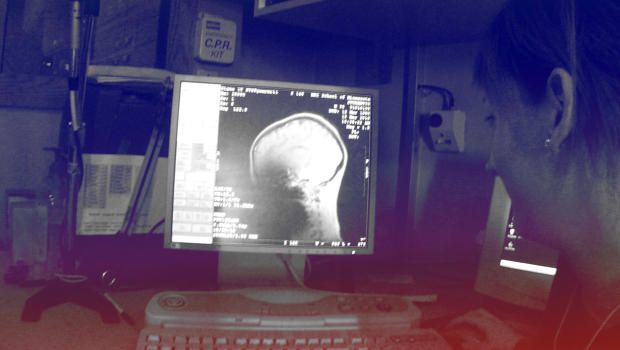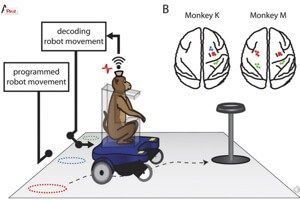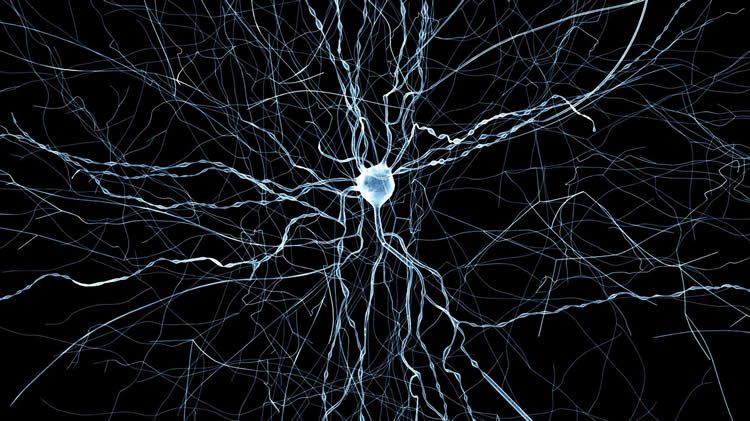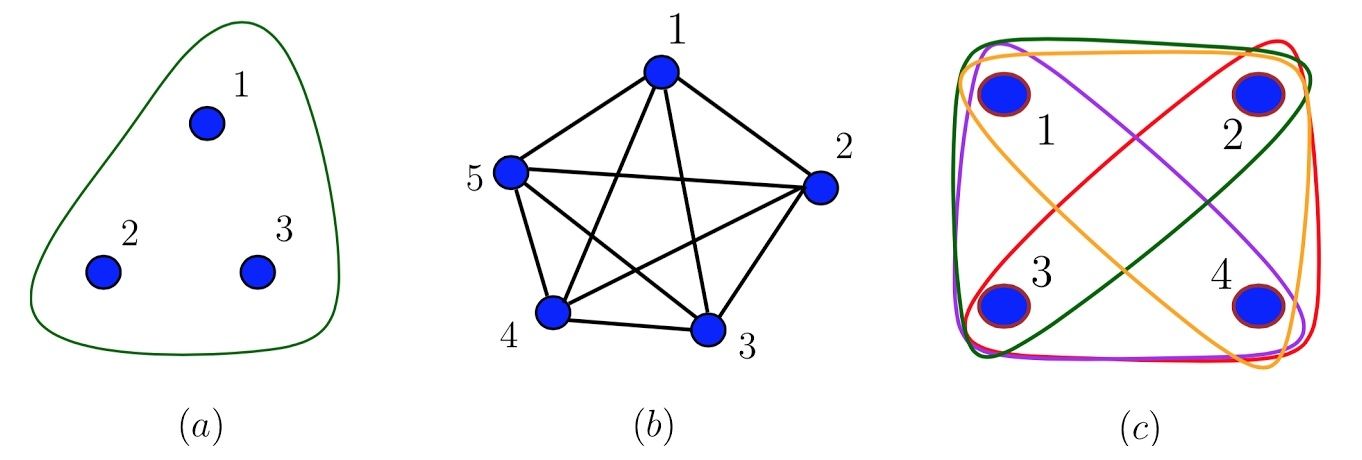The company’s CEO, Andy Conrad: The most important tool in medicine is a computer.



https://youtube.com/watch?v=L2O58QfObus
At this rate, we may see Ray Kurzweil’s vision of connected humans to the cloud and full singularity before 30 years.
Duke University scientists have given a pair of monkeys the ability to drive a wheelchair with their thoughts alone. The work is described in a paper recently published in the journal Scientific Reports and adds to a growing body of work in brain-machine interfaces aiming to return some freedom to the severely disabled.
Duke neuroscientist Miguel Nicolelis and his team first began experimenting back in 2012, when they implanted hundreds of microfibers as thin as a human hair in the brains of two rhesus macaque monkeys. The fibers recorded cortical activity associated with “whole-body movement” and sent the signals to a computer.
 To start, the monkeys sat in wheelchairs that were moved along various paths toward a bowl of grapes across the room. Their brain activity was read and decoded by a computer program and then associated with wheelchair commands.
To start, the monkeys sat in wheelchairs that were moved along various paths toward a bowl of grapes across the room. Their brain activity was read and decoded by a computer program and then associated with wheelchair commands.

The Allen Institute for Brain Science is releasing new, highly realistic computer models of neurons. The models were developed using tools and expertise from the Blue Brain Project.
The Allen Institute for Brain Science and the Blue Brain Project are deepening their collaboration. Today, the US-based Allen Institute is releasing a set of 40 computer models of neurons from the mouse visual cortex, created using tools developed by the Swiss-based Blue Brain Project at EPFL. Using Blue Brain technology, the researchers were able to reproduce the physiology and electrical activity of the neurons with an extremely high level of detail.
The Blue Brain Project is the simulation core of the Human Brain Project, a huge pan-European initiative. The scientific journal Cell recently published a long paper demonstrating the effectiveness of the Blue Brain Project’s modeling tools, focusing on the high accuracy and predictive power of the models and the discoveries they have already led to, including insight into the unexpected role of calcium. At the same time, the team has made these resources available to researchers around the world on a web-based platform.

(Phys.org)—Many quantum technologies rely on quantum states that violate local realism, which means that they either violate locality (such as when entangled particles influence each other from far away) or realism (the assumption that quantum states have well-defined properties, independent of measurement), or possibly both. Violation of local realism is one of the many counterintuitive, yet experimentally supported, characteristics of the quantum world.
Determining whether or not multiparticle quantum states violate local realism can be challenging. Now in a new paper, physicists have shown that a large family of multiparticle quantum states called hypergraph states violates local realism in many ways. The results suggest that these states may serve as useful resources for quantum technologies, such as quantum computers and detecting gravitational waves.
The physicists, Mariami Gachechiladze, Costantino Budroni, and Otfried Gühne at the University of Siegen in Germany, have published their paper on the quantum hypergraph states in a recent issue of Physical Review Letters.

Replacing traditional encryption schemes.
What are the prime factors, or multipliers, for the number 15? Most grade school students know the answer — 3 and 5 — by memory. A larger number, such as 91, may take some pen and paper. An even larger number, say with 232 digits, can (and has) taken scientists two years to factor, using hundreds of classical computers operating in parallel.
Google’s VP Vint Cerf states in the future that “The brain will be digitally altered by software”.
Considered one of the fathers of Internet, renowned in the computer industry, awarded with the highest award of US government, co-creator of TCP/IP internet and current vice president of Google, the Phd Vint Cerf emerges as one of the most authoritative voices in the world to reflect on new technologies around the world.
The computing Scientific who the United States commissioned along with Bob Khan the creation of a network protocol that will interconnect computers in 1973 in the age of cold war who at the age of 20 will work on F-1 engines used as propellant rocket of Saturn V rocket that “visited” the moon, apart from his academic skills, he can be characterized as a very simple person having fine and good sense of humor and very elegant, like someone from an European royalty party, definitely a different personality and image projecting into the collective imagination a professional of his career.
Reflections about internet of things, the possibility of extraterrestrial life, scanning the brain, space internet and even the possibility that humans can communicate with animals were the subjects Cerf answered who recently toured South America sharing time with inhabitants of end of the world.

Glad to see this article get published because it echoes many of the concerns established around China and Russia governments and their hackers having their infrastructures on Quantum before US, Europe, and Canada. Computer scientists at MIT and the University of Innsbruck say they’ve assembled the first five quantum bits (qubits) of a quantum computer that could someday factor any number, and thereby crack the security of traditional encryption schemes.
Shor’s algorithm performed in a system less than half the size experts expected.

I am not in fact talking about the delightful Deus Ex game, but rather about the actual revolution in society and technology we are witnessing today. Pretty much every day I look at any news source, be it on cable news networks or facebook feeds or whathaveyou, I always see fear mongering. “Implantable chips will let the government track you!” or “Hackers will soon be able to steal your thoughts!” (Seriously, seen both of these and much more and much crazier.) …But I’m here to tell you two things. First, calm the hell down. Nearly every doomsday scenario painted by fear-mongering assholes is either impossible or so utterly unlikely as to be effectively impossible. And second… that you should psych the hell up because its actually extremely exciting and worth getting excited about. But for good reasons, not bad.

Very glad to see this article released. When I look at technology I have to look at their value (short & long term), cost & time to develop, usability and adoption potential, and risks & liability as well as their revenue potential & longevity in the market. In order for robots to have broader adoption by consumers and longevity in the future; development groups will need to design & develop robots that are more personable & multi-functional for consumers and companies. We still have a long ways to go.
What role does a philosopher play in building robots? If you’re Lisa Miracchi, an assistant professor in the Department of Philosophy in the School of Arts & Sciences, more than you might think.
When scholars began studying human intelligence, Miracchi says two schools of thought emerged: One group said human beings are simply computers, with mental states and actions explained in computational terms. The other camp believed that intelligence and the ability to think makes humans more than just computers.
There are important similarities between human beings and computers, Miracchi says, but “the story is much more complicated.”
